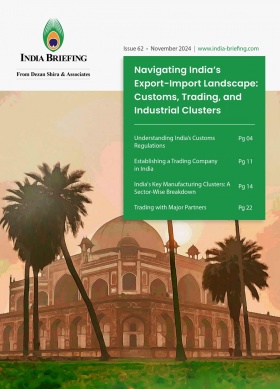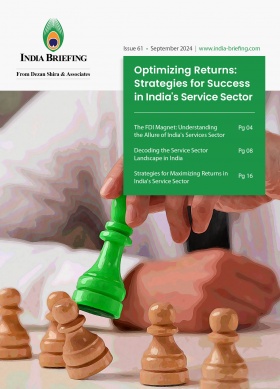Personal Income Tax Changes Under the New Regime for FY 2025-26
India’s personal income tax system has undergone substantial revisions with the Union Budget announced on February 1, 2025. These changes only impact taxpayers opting for the new tax regime. We provide a comprehensive breakdown of the updates, tax slab comparisons, and their implications.
In the union budget for the financial year (FY) 2025-26, finance minister Nirmala Sitharaman announced notable reform to the personal income tax structure, aiming to improve the spending power of India’s middle class and stimulate economic growth.
Among key changes is the increase in the personal tax exemption threshold—under the new tax regime—with income up to INR 1.2 million (US$13,721.6) now being tax-free as the applicable rebate has been raised to INR 60,000 (US$686.08).
This adjustment is designed to boost household consumption and savings.
Other changes to the new tax regime introduced under the 2025 Union Budget were restructuring of tax slabs to provide relief to middle-income earners. The maximum tax rate of 30 percent now applies to incomes of INR 2.4 million (US$27,443.2) and above.
Understanding India’s new tax regime
India’s new tax regime, introduced in 2020 and revised in 2023, has been further updated in 2025 to simplify personal taxation. It offers lower tax rates while removing most deductions and exemptions, including house rent allowance (HRA), Section 80C, and home loan interest deductions.
The 2025 budget raises the tax-free income threshold under Section 87A from INR 700,000 (US$8,004) to INR 1.2 million (US$13,721.6) for FY 2025-26. Tax slabs have been expanded, and rates adjusted to enhance efficiency for middle-income earners.
A comparison of income tax slabs for FY 2024-25 and FY 2025-26 highlights these structural changes.
|
Tax Slabs and Rebate as Announced in the 2025–26 Union Budget |
||||||
|
Income (INR) |
Tax on slabs and rates (INR) |
Benefit (INR) |
Rebate benefits (INR) |
Total benefits (INR) |
Tax after rebate benefits (INR) |
|
|
|
Present (FY 2024-25) |
Proposed (for FY 2025-26) |
Rate/slabs |
Full up to 1.2 million |
|
|
|
800,000 |
30,000 |
20,000 |
10,000 |
20,000 |
30,000 |
0 |
|
900,000 |
40,000 |
30,000 |
10,000 |
30,000 |
40,000 |
0 |
|
1 million |
50,000 |
40,000 |
10,000 |
40,000 |
50,000 |
0 |
|
1.1 million |
65,000 |
50,000 |
15,000 |
50,000 |
65,000 |
0 |
|
1.2 million |
80,000 |
60,000 |
20,000 |
60,000 |
80,000 |
0 |
|
1.6 million |
170,00 |
120,000 |
50,000 |
0 |
50,000 |
120,000 |
|
2 million |
290,000 |
200,000 |
90,000 |
0 |
90,000 |
200,000 |
|
2.4 million |
410,000 |
300,000 |
110,000 |
0 |
110,000 |
300,000 |
|
5 million |
1.19 million |
1.08 million |
110,000 |
0 |
110,000 |
1.08 million |
Deductions introduced under new tax regime 2025-26:
- Section 24(b): Allowance for interest on housing loan for let-out property.
- Section 80CCD(2): Deduction for employer’s contribution to National Pension Scheme (NPS), capped at 14 percent of salary.
- Section 80CCH: Deduction for contributions to Agnipath scheme.
Standard Deduction vs. Standard Rebate
Both the standard deduction and standard rebate reduce tax burdens but operate differently.
The standard deduction is a fixed amount subtracted from total income before calculating taxable income, reducing the amount subject to tax. In India, salaried individuals and pensioners can claim a standard deduction of INR 50,000 (US$571.73) for FY 2023-24, regardless of actual expenses, to offset basic work-related costs.
The standard rebate reduces the final tax liability rather than taxable income. Under Section 87A, individuals earning up to INR 1.2 million (US$13,721.6) in FY 2025-26 qualify for a rebate, effectively eliminating their tax liability.
Increase in India’s Income Tax Exemption Limit
India’s income tax exemption limit has risen over the years:
- 2014: INR 200,000 (US$2,286.9)
- 2019: INR 500,000 (with rebates) (US$5,717.3)
- 2023: INR 700,000 (US$8,004)
- 2025: INR 1.2 million (US$13,721.6)
Key differences between India’s old and new tax regimes
The old tax regime follows a three-slab system, while the new regime offers a six-slab structure, ensuring a more gradual tax increase.
|
Income Tax Slabs Under the Old Tax Regime |
|
|
Income tax slabs |
Income tax rate |
|
INR 0 – 250,000 |
Nil |
|
INR 250,000 – 500,000 |
5 percent |
|
INR 500,000 – 1 million |
20 percent |
|
INR 1 million and above |
30 percent |
Source: India Briefing
Tax deductions and exemptions under the old tax regime
In terms of deductions and exemptions, the old regime allows tax benefits under Section 80C, Section 80D (medical insurance), HRA, home loan interest deductions under Section 80EEA, LTA, and a standard deduction of INR 50,000 (US$571.73).
- Section 24(b) deduction: For self-occupied property, individuals can claim a deduction of up to INR 200,000 (US$2,286.9) on interest paid towards a housing loan.
- Section 80C deduction: A combined deduction of up to INR 150,000 (US$1,715.2) can be claimed for various payments such as life insurance premium, provident fund, ELSS, PPF, SCSS, National Savings Certificate, housing loan principal, tuition fees, etc.
- Section 80CCC deduction: Individuals can claim a deduction for contributions made towards an annuity plan of LIC or other insurance under the NPS.
- Section 80CCD(1) deduction: Deduction can be claimed for contributions made towards the pension scheme of the central government.
- Section 80CCD(1B) deduction: Individuals can claim a deduction of up to INR 50,000 (US$571.73) for payments made to the NPS, excluding any deduction claimed under section 80CCD (1).
- Section 80CCD(2) deduction: Employers can claim a deduction for their contribution to the Pension Scheme of the central government.
- Section 80CCH deduction: Contributions made to the Agnipath scheme are eligible for deduction under this section.
- Section 80D deduction: Individuals can claim a deduction for health insurance premium payments and preventive health check-ups.
- Section 80DD: Allows for a deduction for the maintenance or medical treatment of a disabled dependent.
- Section 80DDB: Provides a deduction for the medical treatment of specified diseases.
- Section 80E: Offers a deduction for interest payments on a loan for higher education for self or a relative, allowing for the full amount paid towards interest to be claimed.
- Section 80EE: Grants an INR 50,000 (US$571.73) deduction for interest payments on a loan for a residential house property, if the loan was sanctioned between April 1, 2016, to March 31, 2017.
- Section 80EEA: Provides a deduction of up to INR 150,000 (US$1,715.2) for interest payments on a loan for the first-time acquisition of residential house property, granted between April 1, 2019, to March 31, 2022.
- Section 80EEB: Allows for a deduction of up to INR 150,000 (US$1,715.2) for interest payments on a loan for the purchase of an electric vehicle, sanctioned between April 1, 2019 to March 31, 2023.
- Section 80G: Allows for deductions on donations made to prescribed funds and charitable institutions.
- Section 80GG: Provides deductions for rent paid by individuals who are self-employed or do not receive HRA as part of their salary.
- Section 80GGA: Enables deductions for donations made towards scientific research or rural development.
- Section 80GGC: Offers deductions for donations made to political parties or electoral trusts.
- Section 80TTA: Allows for a deduction of up to INR 10,000 (US$114.3) on interest received on savings bank accounts by Non-Senior Citizens.
- Section 80TTB: Provides a deduction of up to INR 50,000 (US$571.73) on interest received on deposits by resident senior citizens.
- Section 80U: Allows for deductions for resident individual taxpayers with disabilities.
For tax liability, the old regime remains advantageous for individuals who maximize deductions, while the new regime benefits those without major investments or exemptions, offering lower tax rates and a simpler structure.
Balancing tax relief with fiscal stability
Despite providing tax relief, India’s central government has implemented measures to ensure fiscal responsibility. These include faceless tax assessments to ensure compliance, increased monitoring of digital transactions to curb tax evasion, and mandatory PAN-Aadhaar linking to strengthen financial transparency.
The new tax regime prioritizes simplification and ease of compliance, while the old regime continues to benefit those maximizing deductions.
Conclusion
India’s latest personal income tax revision aims to provide relief for middle-income earners. Raising the tax-free income threshold to INR 1.2 million (US$13,721.6) and restructuring tax brackets reflect efforts to boost disposable income and drive economic growth.
The new tax regime simplifies taxation with lower rates but removes most deductions, while the old regime remains advantageous for those maximizing tax-saving investments. Taxpayers must carefully assess both options to optimize their tax savings.
(US$1 = INR 87.45)
About Us
India Briefing is one of five regional publications under the Asia Briefing brand. It is supported by Dezan Shira & Associates, a pan-Asia, multi-disciplinary professional services firm that assists foreign investors throughout Asia, including through offices in Delhi, Mumbai, and Bengaluru in India. Readers may write to india@dezshira.com for support on doing business in India. For a complimentary subscription to India Briefing’s content products, please click here.
Dezan Shira & Associates also maintains offices or has alliance partners assisting foreign investors in China, Hong Kong SAR, Dubai (UAE), Indonesia, Singapore, Vietnam, Philippines, Malaysia, Thailand, Bangladesh, Italy, Germany, the United States, and Australia.
- Previous Article What’s the Economics Behind Makhana, a Rising Superfood? Understanding India’s Budget 2025 Announcement
- Next Article India Revises Customs Tariff Structure Under Union Budget 2025-26








